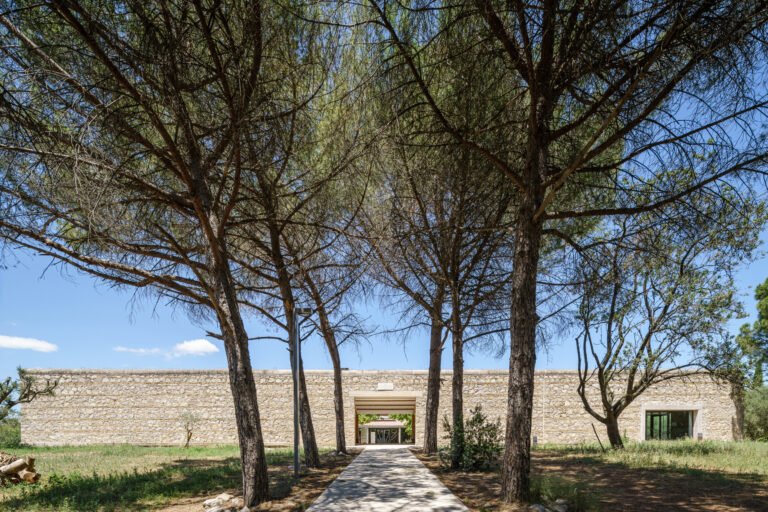Xiao Mi Dou Pavilion / Nhoow Architects
Xiao Mi Dou Pavilion / Nhoow Architects


Text description provided by the architects. The international inquiry-learning farmhouse forest of Longma Village, Baodun Town, Xinjin District, Chengdu is located next to Xinpu City Expressway, on the Baodun Tourist Route, and adjacent to Baodun Ancient City Site. There are 50 households and 300 local people, covering an area of more than 140 mu. Our project is located not far from the entrance of the farmhouse forest, where villagers go in and out every day.


Residents are active in the open space in front of their houses, chatting with neighbors, cleaning vehicles, picking vegetables, cooking, or eating outside. They have already enjoyed a wonderful rural life and landscape in their daily life routine, but there still lacks a small square for everyone to gather, so we adopted the design strategy of minimum participation.


Initially, we named the installation ” Garden”, which means that a courtyard is enclosed to form a garden. Later, the villagers felt that it was very similar to the shape of a rice funnel, and the pieces of sequin panels on the top were like grains of rice, so everyone call it “Xiao Mi Dou” now, which means little rice funnel.


As a rural public installation, Xiao Mi Dou is divided into two fields that spread outward and gather inward. When people sit outwards, there is a close relationship between seeing and interacting with the surrounding characters, activities, and environments between people and environment. While people sit inwards, the space naturally quiets them, they can whisper to someone or just lean on and space out. The inward-sloping roof uses sequin panels. When the wind blows, the roof fluctuates like ripples, people and space feel the wind at the same time. At this time, we communicate and interact with nature, which also affects the space form. When the sun goes down, the roof may reflect the orange sky, the sky melts and dances above our eaves, where we happen to be.







